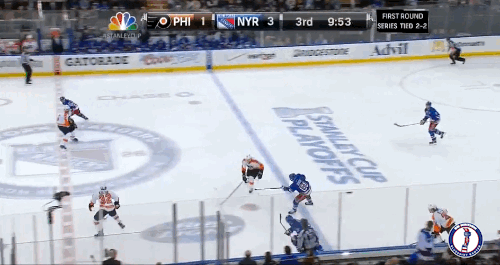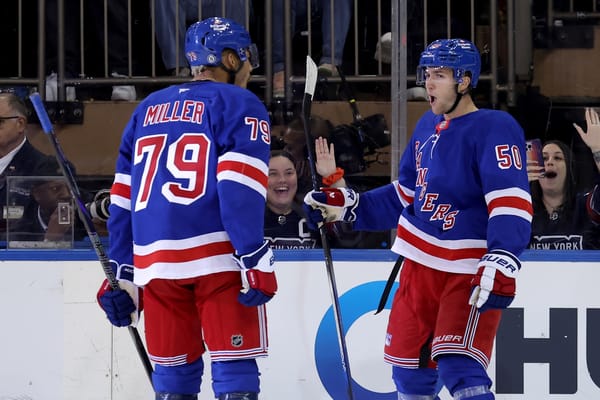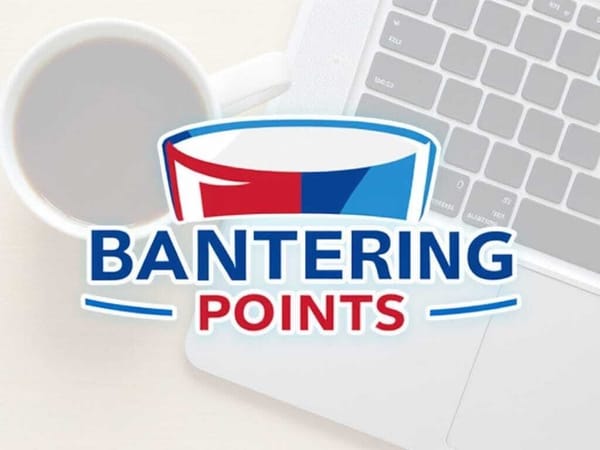2014 Stanley Cup playoffs: The J.T. Miller effect, and working around Chris Kreider
By playing J.T. Miller, Alain Vigneault not only got a steady performance from the playoff newcomer, but also didn't wear down his top offensive weapons.
Since Chris Kreider went down in late March with a broken hand, the task for Alain Vigneault and co. was figuring out how to re-juggle the Rangers' line chart to account for the loss of its speedy winger. At first, the project wasn't as Kreider-focused, with Martin St. Louis still snake bitten, and the lineup in flux to find combinations that clicked overall.
While Kreider was grouped with Derek Stepan and Rick Nash prior to his injury, the third spot on the top line was assumed by St. Louis. If you've watched any of the current first round matchup against the Flyers, you'll have no gripes with that trio.
There were two other logical lines to keep together for Vigneault. The first was the "third line" (which, to be honest, has been the Rangers' best line all season) of Mats Zuccarello, Derick Brassard, and Benoit Pouliot. There never was, and never should have been, any attempts to dismantle that unit.
Next was the fourth line, the best Rangers' bottom-three the team has had in quite some time. It consisted of some combination of Brian Boyle, Dominic Moore, and Derek Dorsett or Daniel Carcillo. Another quality unit.
So finally came the last decision: Who should skate with Brad Richards and Carl Hagelin?
First came Jesper Fast who, after doing enough in Game 1 to get the call again in Game 2, completely fell of the map in the Rangers' first loss of the series. Via Extra Skater:
Next came Daniel Carcillo who, in Game 3, provided a necessary spark, even scoring a goal, and then arguably putting in a stronger performance the following game in a Rangers' loss. 
But what Fast and Carcillo both fell victim to was a lack of accountability, at least in the eyes of Vigneault. Both players were consistently benched down the stretch of both games they played in favor of Nash and St. Louis. But Miller, while being taken off with about five minutes left in favor of Moore (via Shift Chart), did not just give his minutes to Nash or St. Louis as the clock winded down.
It's important to also note the Rangers were protecting a lead on Sunday in Miller's first appearance, so Vigneault held off both Richards and Hagelin also, going with other lines that are more accountable in their own zone. But even in victories this series (take Game 3 in Philadelphia) Carcillo was benched late in favor of St. Louis. When trailing, Vigneault has been quick to double-shift both of his top forwards into that spot on the second line.
What that does, however, is tire out two of the Rangers most important offensive weapons. With Kreider in the lineup, there's no question that—especially in situations the Rangers were trailing—he would have been out on the ice. Protecting a lead is an entirely different story but, as Game 5's shift chart shows, it wasn't Miller, Richards, or Hagelin that were sheltered late, but all three. Kreider's absence obviously creates a domino effect, especially when it comes to the offensive side of things.
And having Nash and St. Louis take their regular shifts in the late stages Sunday clearly helped. St. Louis had arguably his all-around strongest game as a Ranger, and showed his unique blend of skill and creativity late in the game, creating opportunities like these.
Nash was strong at the end of the game with the Rangers fighting to protect the lead, an area of his game he continues to not get enough credit for. And for a player who is also going to kill penalties, and command top line minutes, double-shifting him late in games may not being doing him any help in getting off the scoring snide.
What Miller can provide, aside from what he showed on Sunday, is a late-game respite for Nash and St. Louis. Kreider's timetable is still unknown, although all signs point to him nearing a return. In the meantime, however, Miller appears to be one of the better gap-pluggers Vigneault has tried out thus far.






